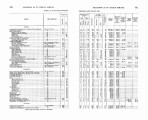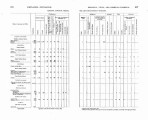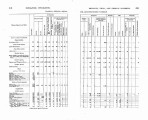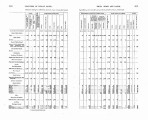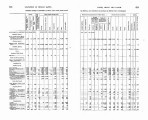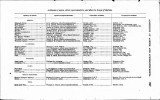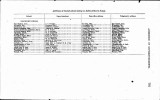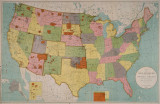| OCR Text |
Show 394 EXPORT OF SUPERINTENDENT OF INDIAN SCHOOLS. varying and extending the noonday menu and providing elementary a ar icultural training for the pupils. In this connection a circular, of w ich the following is an extract, was sent to superintendehts in charge of day schools and to day-school inspectors: You &e requested to see that all day schools under your supervision endeavor to conduct gardens, even where teachers and pupils must go a considerable distance to find a suitable place. Where irrigation is neeemry and the water supply is lim-ited, it is better to have one or more window boxes than to make no attempt at all at gardening. Wherever conditiona will permit, su5cient vegetables should be raised to supplement and give variety to the daily bill of fare. The children at uleh day school should. if possible, have a varm meal at midday. The kind and quantity of vegetables mised at each school should be reported to the OEce. A spirit of emulation between the schools has been encouraged, and the good results have been a parent. At Pine Ridge, 8. Dak., the day-school insX ector arixngeBa fair, more e~peeiallyt o show what the school gar ens had accomplished. From each school was brou ht a s~nalqlu antity of the various kindsof vegetables raised. The frien% l y rivalry thus created spurred the schools on to greater efforts. He also devised the plan of arousing interest and assisting the teachers by having three or four schools assembled at some central point, briug-in w~ t hth em cooked provisions for the noonday meal, and during sc% o ol hours having each instructor give a practical explanation of the methods he had found most useful in teaching Engl~ah, agricul-ture. and other subjects. The day-school s stem has reached its best development on the Pine Ridge and Rosebui reservations. All the schools at Pine Ridge are doing remarkably good work under the general charge of Inspector J. J. Duncan, who spares no effort to have his teachers introduce the most piactical methods of instruction, and has brought these schools up to a hi h degree of excellence. At one of these schools the teacher, Thomas f Jackson, adopted a practical method of makin his pupils familiar with simple business transactions, which he brie y describes as follows: f A system of debits and credits was inaugurated and made a working part of the school-e. g., at the industrial period the boys are paid hy the hour for their services in behalf of the school. At the end of each week the credits are entered in a book opposite each name by the storekeeper (a big boy or girl who serves a month, meanwhile becoming thoroughly acquainted with the simple system of bookkeeping employed). When sufficient sums have been placed to a boy's credit he is allowed to buy what he needs in the way of clothing, etc. It has been found that in the course of a year each boy who is large enough to work will pa in full for the things he receives. Thus he feels the manly pride of having earned gis way. In short, he has measured the values by honest labor. This method is considered an excellent one and should prodoce prac-tical results in giving the children a knowledge of business methods that will be of great value to them in taking up the responsibilities of self-support, and, with your approval, we have recommended that where practicable this system be ~nauguiatedin other day schools. Day-school instruction is the initial and most important element in the education of the Indian. These schools stand in the same relation to the Indian children as the rural common schools do to the white chil-dren, and it is recommended that they be established within easy dis-tance of every Indian settlement. This would meet the objection frequently made by Indian parents to their children being sent to a distant boarding school. |






















































































































































































































